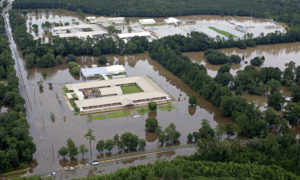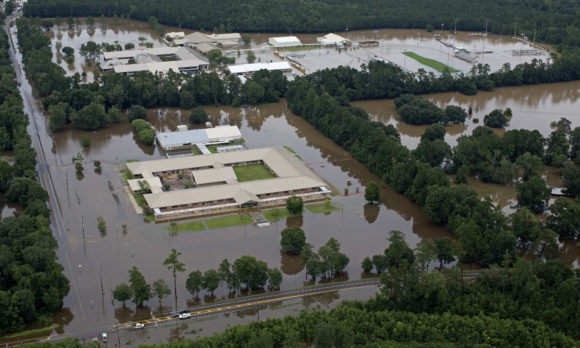The federal government has contracted with private reinsurers to improve the National Flood Insurance Program’s claims paying ability and reduce the need for the NFIP to borrow from the U.S. Treasury to cover future claims.
The Federal Emergency Management Agency (FEMA), which oversees the flood program, said it is transferring $1 million in NFIP risk to private reinsurers.
FEMA said it entered into reinsurance agreements, effective September 19, 2016 through March 19, 2017, with Transatlantic Reinsurance Co., Swiss Re America Corp., and Munich Reinsurance America Inc.
FEMA contracted with Guy Carpenter and Co., a subsidiary of Marsh & McLennan, for brokerage assistance in securing the reinsurance agreements.
The catastrophe property excess of loss reinsurance agreement contains two coverage layers. Under the first layer, the reinsurers agree to indemnify FEMA $1,000,000 for flood claim losses that exceed $5,000,000. Under the second layer, the reinsurers agreed to indemnify FEMA $1,000,000 for flood claim losses when the total flood losses from a single event exceeds $5,500,000,000. Each reinsurer agrees to assume 33 1/3 percent of the total coverage secured under the arrangement, according to FEMA.
The agency said it is taking measured steps to create a reinsurance program and acknowledges that this first risk transfer amount is “small in comparison to the losses incurred from recent catastrophic events.”
The NFIP currently owes the Treasury $23 billion. Claims of $16.3 billion from Hurricane Katrina and $8.3 billion from Hurricane Sandy have contributed to this debt.

For the early January 2017 program, FEMA said it is still determining the amount of risk it will transfer to reinsurers but that the purchase will be larger than the initial amount of $1 million.
“While the early January program will reduce NFIP’s overall risk, the NFIP will continue to bear the majority of its risk. It will take many years to build up a reinsurance program in which the reinsurance markets bear a significant portion of the NFIP risk,” the agency said on its web site.
The Biggert-Waters Flood Insurance Reform Act of 2012 and the Homeowner Flood Insurance Affordability Act of 2014 authorized FEMA to secure reinsurance from the private reinsurance and capital markets.
FEMA previously was limited to only using flood insurance premiums, available surplus, and borrowing capacity from the U.S. Treasury to pay claims.
A number of states have reinsurance programs including Florida (Citizens Property Insurance), California (California Earthquake Authority) and Texas (Texas Windstorm Insurance Association).
“This program with FEMA is an important first step and reflects the priority to mitigate the impact of natural disasters by building resilient communities and helping Americans recover when damage occurs,” said Tim Brockett, strategic product manager with Munich Re US, one of the reinsurers on the program, in a release.
Brockett noted that his company is already active in the private flood insurance market, having launched a personal lines Inland Flood Insurance Policy Endorsement in 2015, and he said it is interested in seeing that more U.S. citizens get coverage for flood events.
“However, there are challenges/obstacles to be overcome before the private insurance market is ready to fully take on flood risk. A gradual transition will be necessary, and for that to take place, the NFIP needs to be fortified in the short-term against spike year events such as Hurricane Katrina and Superstorm Sandy,” he said.
The Reinsurance Association of America praised the move.
“I commend the Administration and FEMA for creating the NFIP reinsurance program and the financial protections it will afford taxpayers,” Frank Nutter, RAA president, said. “The RAA has long advocated a private reinsurance market for flood, and this is a significant milestone for the industry.”
Topics Catastrophe Mergers & Acquisitions USA Flood Reinsurance Market FEMA
Was this article valuable?
Here are more articles you may enjoy.



 SIAA Announces Strategic Partnership With Progressive
SIAA Announces Strategic Partnership With Progressive  10 Highest Class-Action Settlements in 2025 Eclipsed $70B Total: Duane Morris
10 Highest Class-Action Settlements in 2025 Eclipsed $70B Total: Duane Morris  MAPFRE Accuses AAA of Violating Long-Time Exclusive Marketing Agreement
MAPFRE Accuses AAA of Violating Long-Time Exclusive Marketing Agreement  New York Governor Hochul Vows to Tackle Insurance Affordability, Litigation and Fraud
New York Governor Hochul Vows to Tackle Insurance Affordability, Litigation and Fraud 

